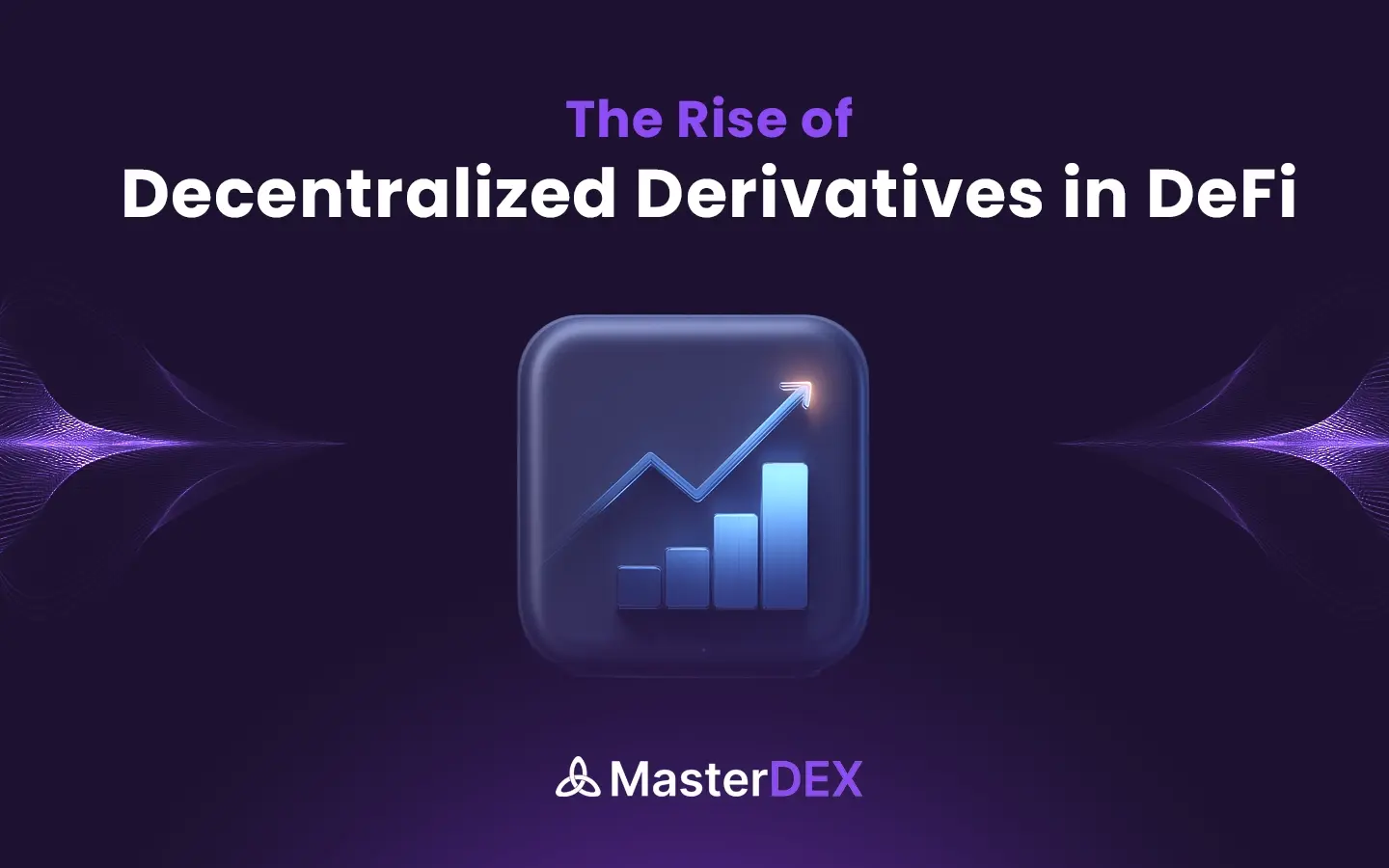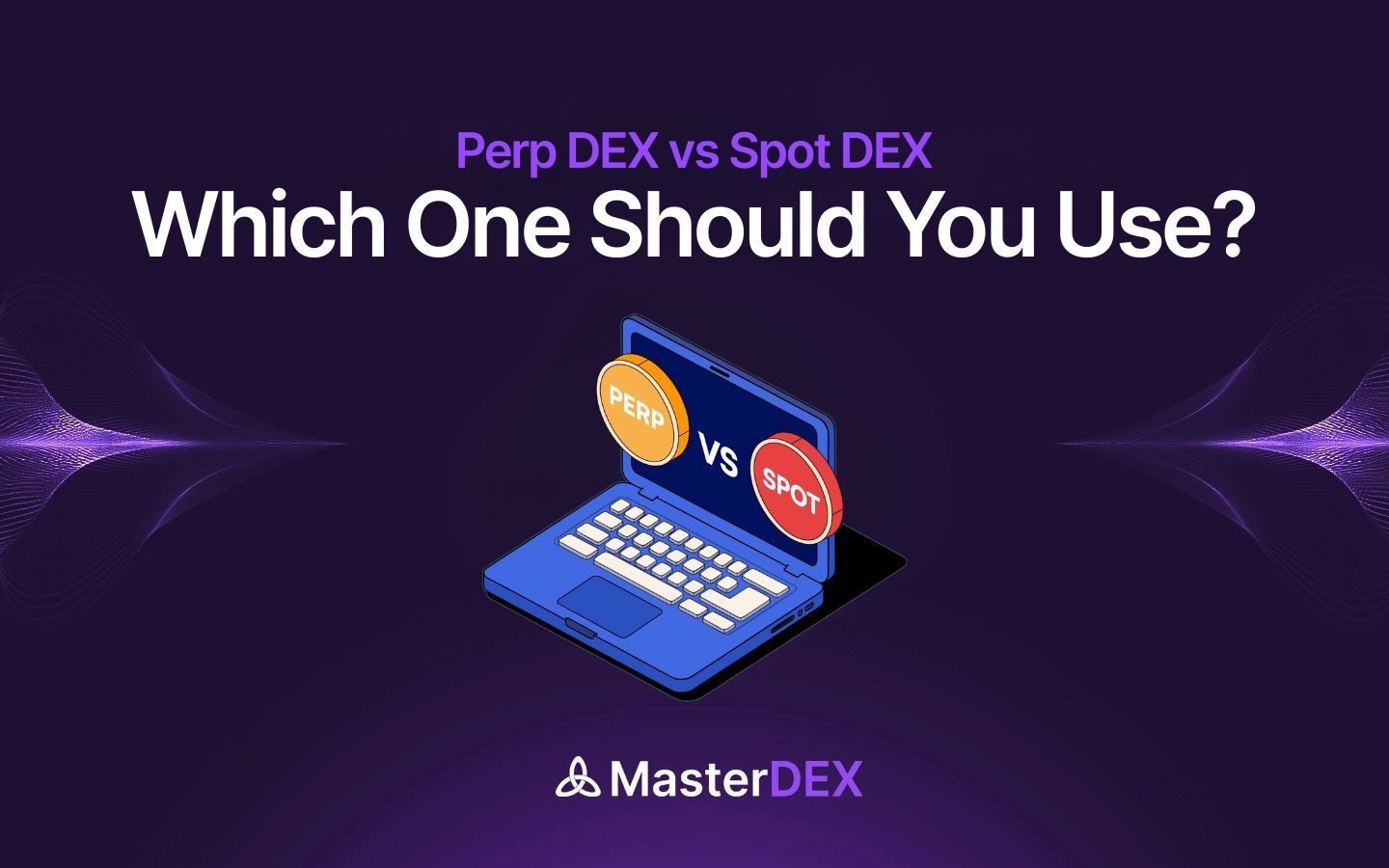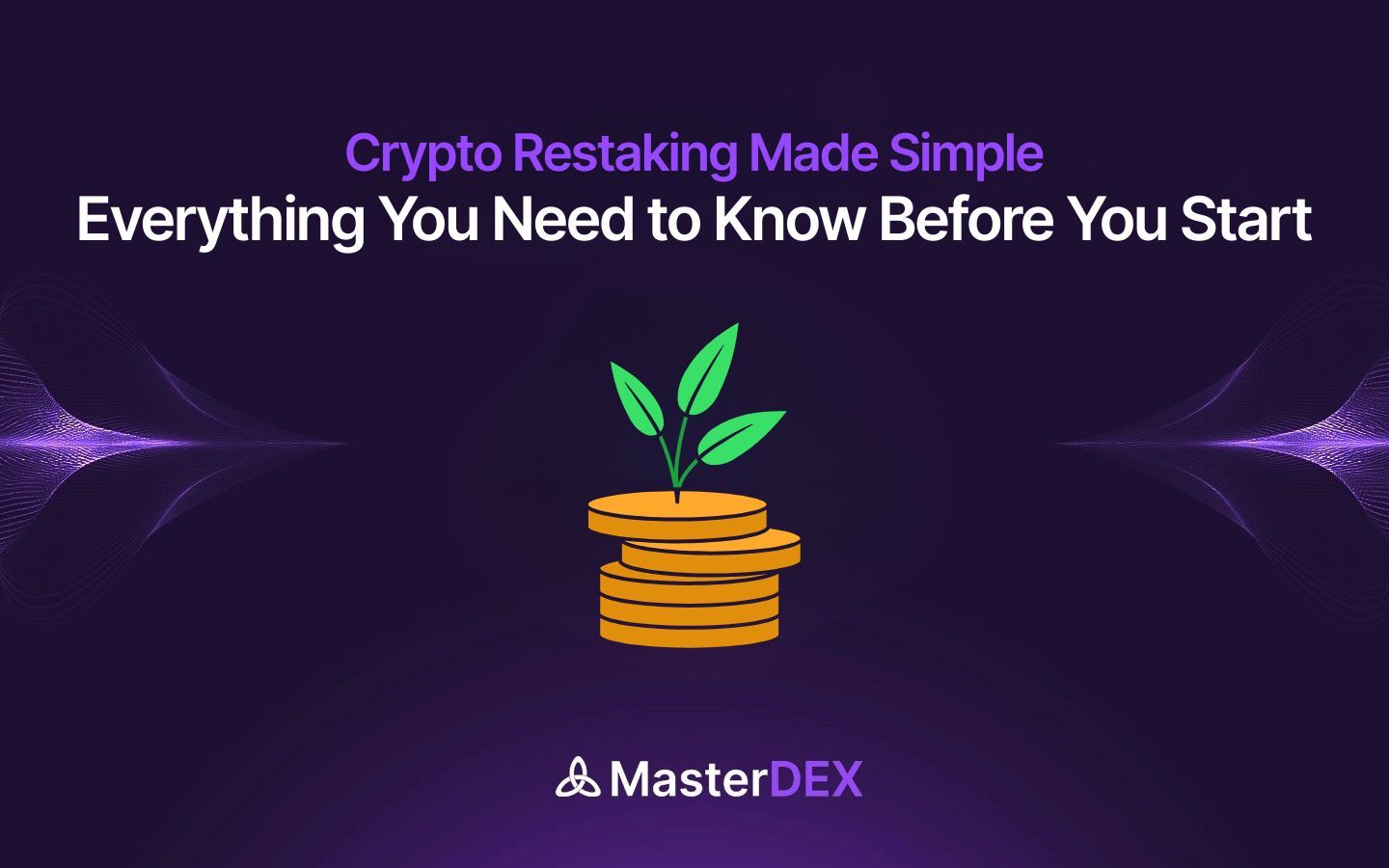Table of Contents:
ToggleIntroduction
To understand decentralized derivatives, we must first break down what a derivative is. In traditional finance, a derivative is a financial contract whose value is determined by the price or performance of an underlying asset. This underlying asset could be anything—stocks, commodities like gold or oil, indices, currencies, or even another financial instrument.
Derivatives are widely used for hedging risk (for example, protecting against price drops in a commodity) and for speculation (betting on future price movements). Common derivatives include futures contracts, options, and swaps.
Decentralized derivatives take these same principles and bring them into the world of blockchain and decentralized finance. Rather than being traded on centralized exchanges like the Chicago Mercantile Exchange (CME) or the New York Stock Exchange (NYSE), such derivatives operate through smart contracts on public blockchains.
These smart contracts replace intermediaries, automatically enforcing the terms of the contract, such as pricing, margin calls, settlements, and payouts, without human intervention. Everything is transparent and traceable on the blockchain, which eliminates the need for centralized brokers.
In short, decentralized derivatives are blockchain-powered versions of traditional financial instruments, offering the same functions but with additional benefits like open accessibility, reduced costs, and censorship resistance.
Why Decentralized Derivatives Matter?
These derivatives are a crucial piece of the DeFi ecosystem because they democratize access to financial tools that were previously restricted to large institutions and high-net-worth individuals. In traditional markets, derivatives often require complex infrastructure and regulatory compliance, which means smaller investors rarely get direct access.
With decentralized derivatives, anyone with a crypto wallet and an internet connection can create or trade derivative contracts. This is especially valuable for traders in regions with limited access to traditional financial services.
Moreover, decentralized derivatives expand risk management strategies in crypto markets. Since cryptocurrencies are highly volatile, traders often need to hedge price fluctuations. Decentralized futures and options allow them to protect their investments, just as derivatives do in traditional finance.
They also contribute to market efficiency and liquidity, giving traders more sophisticated tools to speculate on price movements, earn yield, or hedge risks. Platforms like dYdX and GMX have already proven that such derivatives can rival centralized offerings in terms of both volume and innovation.
How Do Decentralized Derivatives Work?
The operational flow of decentralized derivatives can vary depending on the protocol and the specific type of derivative being used such as perpetual futures, options, or synthetic assets. However, the foundational mechanics generally follow a clear, blockchain-driven process.
To begin, a user connects their crypto wallet to a decentralized derivatives platform. Most platforms require the user to deposit collateral, usually in the form of stablecoins like USDC or native tokens like ETH. This collateral acts as a safeguard to cover potential losses and maintain the integrity of the contract.
Once connected, the user selects an underlying asset they want to gain exposure to—such as Bitcoin, Ethereum, or even a synthetic representation of a real-world asset like gold or a stock index. They also choose the type of derivative they want to engage with: this could be a perpetual contract, an options contract, or a synthetic asset. Depending on the derivative, additional parameters may be configured, including leverage ratio, expiry dates, or strike prices.
Unlike traditional finance, where trades are matched through centralized exchanges or brokers, decentralized derivatives execute trades using smart contracts and either order book systems or automated liquidity pools. Some platforms (like dYdX) use decentralized order books to match trades, while others (like GMX or Perpetual Protocol) utilize virtual AMMs (automated market makers) to simulate counterparty liquidity. This means users are often trading against the protocol itself rather than directly against another individual trader.
After the trade is initiated, a smart contract is deployed or updated to represent the position. This contract automates all terms and conditions: managing margin requirements, calculating unrealized profits or losses, monitoring liquidation thresholds, and eventually executing settlements. Real-time asset pricing is provided through decentralized oracle networks such as Chainlink, ensuring that the contracts remain accurately tied to real-world data.
Throughout the lifecycle of the trade, users can monitor their positions directly on the platform. Depending on market conditions, they may choose to close the position manually, increase collateral, or allow it to reach a natural settlement point, such as expiry or liquidation. When the position ends, the smart contract automatically processes the outcome and redistributes funds based on the final value of the contract.
In this model, there are no intermediaries. The entire process, from contract creation and execution to final settlement is handled autonomously on-chain. This not only reduces operational overhead and fees but also increases transparency, efficiency, and global accessibility.
Types of Decentralized Derivatives
Decentralized derivatives have evolved to include various instruments designed to serve different trading needs, from speculation to hedging. Among the most widely used are perpetual futures, options, synthetic assets, structured products, and emerging swaps.
-
- Perpetual futures are the most popular type in DeFi. Unlike traditional futures that expire on a specific date, perpetual futures can be held indefinitely. They maintain price parity with the underlying asset through a funding rate system, where traders pay or receive fees depending on their position and the contract’s price relative to the spot price. This model allows traders to speculate on price movements over extended periods without worrying about rollovers or contract expirations. Protocols like dYdX and GMX have made perpetual futures a core part of decentralized trading, providing significant liquidity and leverage options.
-
- Options are another fundamental derivative adapted for decentralized markets. These contracts grant the right, but not the obligation, to buy or sell an asset at a set price within a specific timeframe. In DeFi, smart contracts automate the creation, pricing, and settlement of options, removing the need for traditional brokers. Platforms like Opyn and Lyra have made on-chain options trading accessible to a global audience, enabling strategies ranging from simple hedges to complex multi-leg trades.
-
- Synthetic assets, also known as “synths,” represent real-world assets in a tokenized form. For example, traders can gain exposure to stocks, commodities, or currencies without actually owning them. Platforms like Synthetix mint these assets by using over-collateralized pools and price oracles to mirror real-time values. This innovation allows users to diversify into traditional markets directly from a DeFi platform, opening opportunities previously restricted to conventional exchanges.
-
- Lastly, swaps are beginning to emerge as a category within DeFi derivatives. These products, which are well-established in traditional finance, involve exchanging cash flows or asset returns, such as fixed interest rates for floating ones. In decentralized markets, they are being developed to manage interest rate risks in lending protocols and to create innovative yield strategies. Though still in their early stages, swaps hold significant potential as DeFi matures.
Benefits of Decentralized Derivatives
Decentralized derivatives are transforming how traders interact with financial markets by introducing transparency, accessibility, and innovation. Let’s dive into the key benefits:
-
- Open and Global Accessibility
Traditional derivatives markets are often restricted to institutional traders or investors in specific jurisdictions. In contrast, decentralized ones are accessible to anyone with an internet connection and a crypto wallet. There’s no need for lengthy verification (KYC) or account approval processes. This opens opportunities for users in countries where traditional financial products are hard to access.
-
- Transparency and Auditability
Every transaction, trade, and settlement is recorded on the blockchain. Anyone can verify the terms of the contract or track the flow of funds in real time. This eliminates the need to trust intermediaries since all information is publicly auditable, reducing the risks of fraud or manipulation.
-
- Trustless and Automated Execution
Smart contracts manage everything, from margin calls to payouts, without relying on a centralized party. This automation eliminates the counterparty risk present in traditional derivatives, where you must trust a clearinghouse or broker to execute contracts properly.
-
- Lower Costs and Fees
Because there are no middlemen such as brokers, or custodians, the cost of trading derivatives drops significantly. Smart contracts replace much of the administrative and settlement processes, resulting in lower trading fees compared to centralized platforms.
-
- Composability with DeFi
One of the most powerful features of DeFi is composability; the ability for different protocols to work together like building blocks. For example, a trader can use a decentralized derivative to hedge their position, stake collateral on another protocol, and earn yield simultaneously. This level of interoperability is impossible in traditional finance.
-
- Censorship Resistance
These derivatives operate on global, decentralized networks, meaning no government or institution can easily block, restrict, or freeze transactions. Users retain full control of their assets and trades, offering greater financial freedom.
Risks & Challenges
While these derivatives offer numerous advantages, they also come with significant risks that traders must understand. These challenges arise due to both the complexity of derivatives themselves and the technical nature of decentralized protocols.
-
- Smart Contract Vulnerabilities
Decentralized derivatives rely on smart contracts, which are only as reliable as the code behind them. If there is a bug, coding error, or exploit, hackers can drain funds or manipulate trades. Even well-audited protocols have faced attacks in the past, highlighting the importance of careful platform selection.
-
- Oracle Risks
Price oracles are essential for decentralized derivatives as they provide real-world data (like asset prices) to the blockchain. If an oracle is manipulated, delayed, or fails, it can lead to incorrect settlements, wrongful liquidations, or unfair pricing. Such events have caused significant losses on various DeFi platforms in the past.
-
- High Leverage and Liquidation Risks
Many of these types of derivatives allow high leverage (e.g., 10x, 20x, or even 100x). While leverage magnifies profits, it also amplifies losses, increasing the likelihood of liquidation. Without proper risk management, traders can lose their entire collateral in minutes due to volatile price swings.
-
- Liquidity Challenges
Compared to centralized exchanges, some decentralized platforms struggle with low liquidity. This can cause slippage (getting a worse price than expected when executing trades) and limit the ability to enter or exit large positions efficiently.
-
- Regulatory Uncertainty
DeFi derivatives operate outside traditional financial regulations, which can be both a benefit and a risk. Regulators around the world are still figuring out how to govern these instruments. Sudden regulatory changes or bans could impact platforms or even restrict access to certain markets.
6. Complexity for New Users
Derivatives are inherently complex financial products. Their decentralized versions add layers of technical complexity, such as understanding collateral ratios, funding rates, and oracle data. New users without proper education can easily make costly mistakes.
Use-Cases of Decentralized Derivatives in DeFi
These derivatives are not just tools for speculation, they have practical and impactful applications across the DeFi ecosystem. Their flexibility, combined with the transparency of blockchain, allows traders, investors, and even institutions to use them in creative and strategic ways.
One of the most common use cases is hedging against price volatility. Cryptocurrencies are known for their unpredictable price movements, which can cause significant risks for traders and businesses alike. By using perpetual futures or options, market participants can lock in prices or protect their portfolios from sudden drops. For example, a Bitcoin holder worried about a potential price decline can purchase a put option on a decentralized platform, ensuring that they can sell their BTC at a predetermined price even if the market crashes. Similarly, miners and liquidity providers often use derivatives to stabilize their earnings by offsetting price fluctuations.
Another important application is speculation and leveraged trading. Many traders use decentralized derivatives to amplify their exposure to price movements without holding the underlying asset. Platforms like dYdX or GMX allow traders to open leveraged positions, sometimes up to 20x or more, enabling them to benefit from both rising and falling markets. While this increases profit potential, it also requires careful risk management due to the higher risk of liquidation.
Synthetic asset trading is another innovative use case. Through platforms like Synthetix, users can gain exposure to real-world assets like stocks, commodities, and indices without needing traditional brokerage accounts. This opens opportunities for traders in regions where global markets are inaccessible due to regulations or geographic barriers. For instance, someone in a developing country can use a synthetic derivative token to mirror the price of Tesla stock or gold, all within a decentralized and borderless framework.
Lastly, these derivatives play a crucial role in arbitrage and market efficiency. Traders often use derivatives to exploit price discrepancies between spot and futures markets or across different DeFi platforms. This not only benefits the traders themselves but also helps maintain fair pricing and liquidity across decentralized markets. Over time, such activity contributes to the growth of more robust and efficient DeFi ecosystems.
Conclusion
Decentralized derivatives are reshaping how financial markets operate by merging the sophistication of traditional derivative instruments with the transparency, accessibility, and automation of blockchain technology. They open up a world where anyone, regardless of location or background, can hedge risks, speculate on price movements, or gain exposure to real-world assets, all without the need for banks or brokers.
However, as with any financial tool, they come with risks, ranging from smart contract vulnerabilities and oracle issues to regulatory uncertainties. Success in using these products depends on understanding their mechanics and practicing disciplined risk management.
Looking ahead, decentralized derivatives are likely to expand even further, integrating real-world assets, attracting institutional participation, and offering more diverse and sophisticated products. They are not just a reflection of DeFi’s current potential but also a glimpse into the future of a fully decentralized and global financial system.



